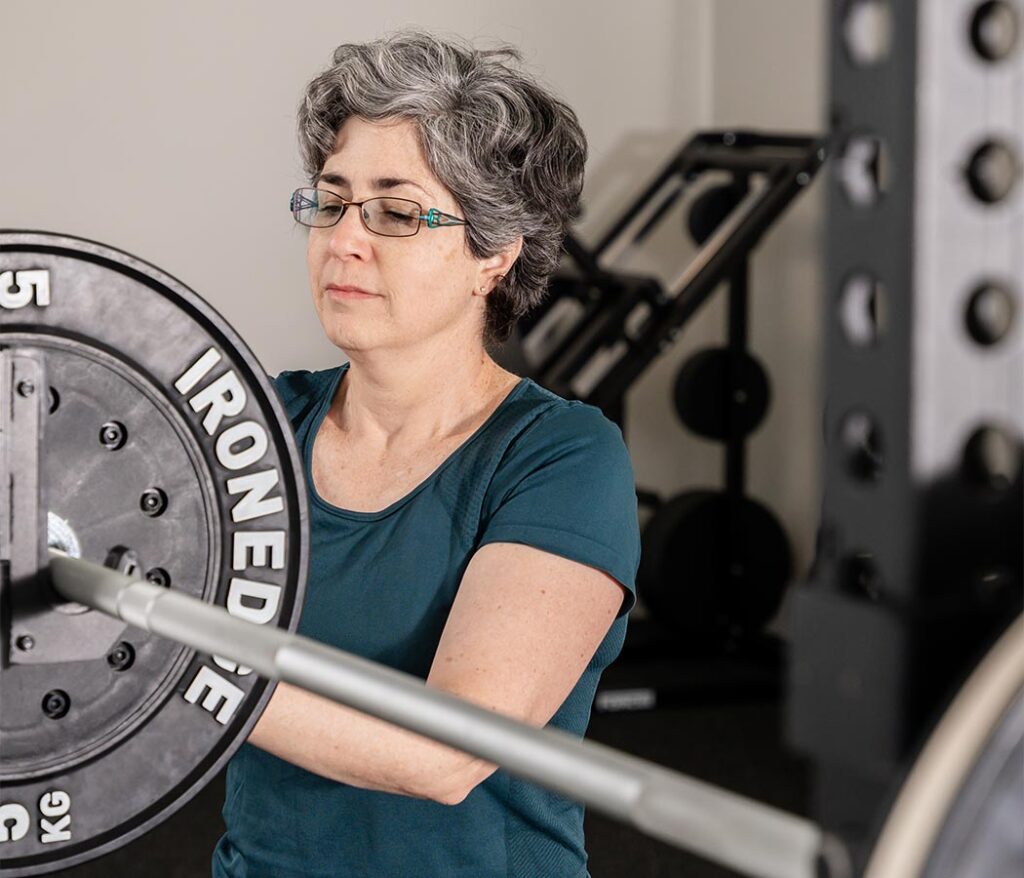As the year commences, January seems to tick along at a slow pace. This New Years period offers the perfect opportunity to both reflect and look ahead. For many, it’s a chance to visit (or revisit) some goals. There’s a myriad of possible New Year’s resolutions to pick from but we suggest the following: resolve to get stronger. Strength, defined by the ability to produce force to interact with the environment around us, is critical to our ability to achieve all other things. How much strength is necessary is another question altogether. That being said, it’s been shown that declining physical strength impacts quality of life across many domains (1). Social, mental and physical health all deteriorate when someone has less than the required strength. Although age is not the catalyst in and of itself, it’s often associated with this decline. So, as we age, how can we maintain enough strength and maintain or even increase our quality of life? Let’s find out.
Strong and Independent
As our world faces an aging population, health-related quality of life becomes front of mind. With advanced age, individuals tend to deteriorate across various bodily systems. This increases both the risk of dependency and comorbidities. Physical activity can help individuals retain their independence and ability to interact with the world around them. A cross-sectional study explored this phenomenon (2). 173 women between the ages of 58 – 94 across two residential homes in Hungary were investigated. Researchers studied how body-size, composition and fitness varied across age brackets. This information could then inform personalized care plans for these individuals. It was found that self-reported health-related quality of life is impacted by physical, functional, sociological and psychological aspects. Those aspects in turn are affected by physical fitness. Increasing age saw increasing trends of higher relative fat mass compared to lean mass, less aerobic fitness and lower physical strength. We know age plays a role, but, like the classic “what came first, the chicken or the egg?”, the picture is a little bit more complicated.
Use it or lose it.
Physical fitness, and importantly, strength is one part of addressing the decline in quality of life as we age. Another cross-sectional study, this time in Poland, involved 213 women over the age of 60 who were monitored for seven days (3). They were assessed on physical activity levels during this period. Additionally, they underwent a battery of physical capacity assessments and completed a questionnaire. The key findings were that women who met the physical activity guidelines over this seven-day period demonstrated higher scores on the handgrip test (on average being about 2.12kg stronger) and a better result on the “8-foot Up and Go test” (which involves standing up from a chair and walking 8-feet and then returning to the chair). Importantly, physically active women reported a better quality of life, particularly in social domains. It’s a lot harder to get out and meet people when even getting up and walking 8-feet is hard.
Get strong, live better.
Strength underpins our ability to interact with the world around us. Our two example papers today demonstrated how as we age quality of life can but doesn’t have to decline. Importantly, social relationships, physical functioning, and psychological function are all impacted by baseline physical fitness. It’s not clear as to whether or not an individual needs to be “x” strong to be healthy. What is clear however is that being stronger doesn’t hurt. With sufficient strength you can get up and interact with the world around you. For example, something as simple as having stronger thighs may in turn mean being capable enough to handle a walk, helping you maintain aerobic fitness and more. This however requires you make the choice to start training.
New Years Resolutions are important – we all have goals that we value. At Hobart Strength Training we aim to get you Stronger for Life. Although there are plenty of important goals worth chasing, we think one stands out. For yourself, and, to maintain connections with those we care about we think everyone should resolve to get stronger this new year. If you’re looking to get stronger, get in contact with us here.
References:
- Age-associated declines in muscle mass, strength, power, and physical performance: impact on fear of falling and quality of life – PMC (nih.gov)
- Functional Fitness and Quality of Life among Women over 60 Years of Age Depending on Their Level of Objectively Measured Physical Activity – PubMed (nih.gov)
- Associations between fitness levels and self-perceived health-related quality of life in community – dwelling for a group of older females – PubMed (nih.gov)

